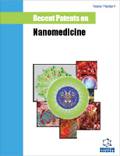Abstract
New production insights are being prospected for regenerative medicine purposes to tackle current implant problems encountered regarding supply scarcity as well as infection and rejection episodes. Supercritical fluid technology emerges as a promising green solvent-based option for the high throughput production of solventfree scaffolds compatible with the incorporation of thermally-labile compounds. A patent survey on the evolution (from the first patent on the topic in 1991 to present) of the state-of-the-technique on scaffold production using supercritical fluids is presented in this work. Role of supercritical fluids in these patents has been classified into three groups: preparation of synthetic scaffolds, treatment and purification of tissues, and post-treatment of medical devices. Key processing parameters for each manufacturing technique are identified as well as their main possibilities, advantages and limitations.
Keywords: 3D-scaffolds, porous materials, regenerative medicine, supercritical CO2, supercritical foaming, supercritical sterilisation.
Graphical Abstract
 27
27

